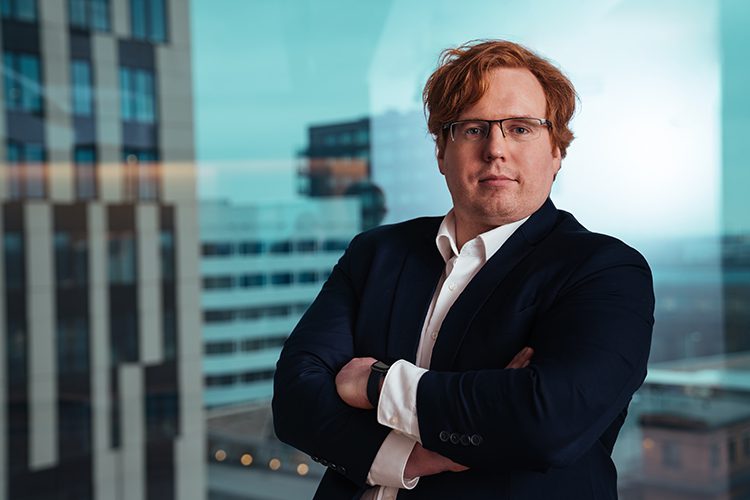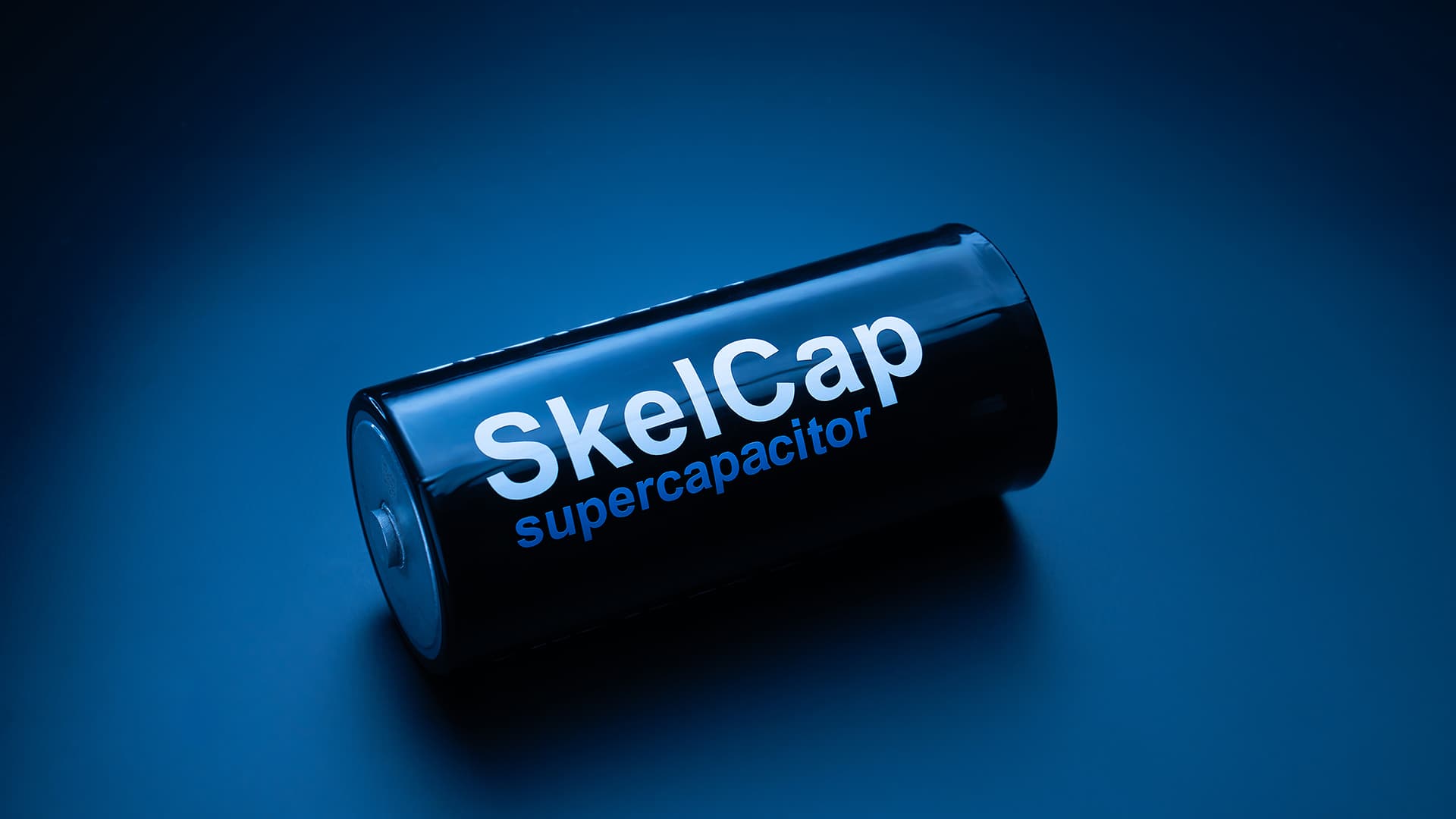At a time when energy scarcity is threatening the pace of innovation, Skeleton Technologies is doing what most thought was impossible. They’re not just storing energy. They’re unleashing it; faster, cleaner and smarter than ever before.
Founded in Estonia in 2009, Skeleton began with a unique material breakthrough: Curved Graphene. That scientific edge has evolved into one of Europe’s most promising cleantech scale-ups. One that is transforming energy-hungry industries, stabilising electrical grids, and powering mission-critical sectors from defence to fusion.
But what some might find even more inspiring is that behind the breakthrough is an inspiring story rooted in childhood curiosity and long-term ambition. “We started Skeleton Technologies out of a strong interest in deep technologies and their application in solving the world’s greatest challenges, such as climate change,” says co-founder and CEO Taavi Madiberk.
That childhood spark eventually led to the founding of Skeleton alongside Oliver Ahlberg, Dr. Jaan Leis, and Dr. Anti Perkson. “Since founding the company, Skeleton has aimed to apply our proprietary ‘curved graphene’ material in energy storage solutions. We started with supercapacitors because of their unique capacities of extreme-high power and fast charging/discharging, which we saw would fit a gap in the market where other energy storage devices, such as batteries, kept failing,” says Madiberk.
The goal was clear: meet the demands of high-power, mission-critical applications where traditional batteries fall short. “We knew we were going for multiple unaddressed niche markets… but we were convinced that we could have a real impact by meeting their needs.”
And they did. Skeleton’s technology now powers some of the most demanding industries on the planet, from space to mobility, grid to AI. And yet, the mission hasn’t changed. “We still have the same firm belief. We are still delivering high-power solutions for mission-critical applications – but now we are enabling both the green and AI revolutions.”

A strategic partnership built to scale
Skeleton’s evolution from a deep-tech start-up to an industrial frontrunner was accelerated by a partnership with InnoEnergy, one of its earliest strategic investors. “InnoEnergy has supported us since 2016 and was one of our first strategic investors. Their initial investment was instrumental in helping us increase the industrialisation of our products and to be able to deliver to our customers.”
But InnoEnergy’s support went far beyond capital. The partnership opened doors to new customers, alliances, and funding opportunities. “InnoEnergy has been instrumental in our business development, not only through close collaboration with their teams across Scandinavia, Germany, and France, but also by actively connecting us with local companies and investors. Being part of InnoEnergy means joining a wide community and network that provides access to leading industrial companies in Europe.”
Today, the company is Europe’s only vertically integrated supercapacitor manufacturer, controlling everything from raw material production to system software.
More power, less waste
Skeleton’s current focus is razor-sharp: enabling power grids resilience and electrification in energy-intensive sectors with a fast-growing presence in AI infrastructure. Take data centres, for example, which are among the world’s biggest energy guzzlers. Skeleton’s response? A breakthrough product called GrapheneGPU.
“Our new product, GrapheneGPU, based on supercapacitors-technology, provides 40% more FLOPS while using 45% less energy and decreases heat generation by eliminating the need for GPU dummy loads and de-throttling GPUs and allowing them to operate at full capacity.”
In other words: more power, less waste. “AI data centres currently use twice the energy they should need, and this is because they are wasting energy. By adopting peak shaving and intelligent energy management, we could save tens of billions annually”.
What makes this possible is the unique ability of supercapacitors to handle extreme power peaks and react in microseconds; a capability that no other technology can match. In AI infrastructure, they’re not just a component; they’re becoming a critical part of the solution.
It’s no surprise, then, that Skeleton was recently invited to join the Sustainable AI Coalition alongside NVIDIA, Schneider Electric, and Mistral AI. At the same time, Skeleton is becoming a valuable asset of Europe’s electricity grid. “We are the last line of defence of the German grid already. All TSOs in Germany want E-STATCOM, where supercapacitors play an instrumental role, and we collaborate with top players in this segment, such as Hitachi Energy and Siemens. We now work in the UK as well with Hitachi.”
Global demand
While headquartered in Europe, Skeleton’s global impact is growing fast. “Already half of our revenue comes from North America.” The company is also gaining commercial traction across Finland, Sweden, France, Japan, and Brazil, working with hyperscalers, robotics firms, and strategic partners in high-growth regions.
“The recent blackout in the Iberian Peninsula has stressed the need for grid stabilisation and modernisation, and many European countries are actively looking into our solutions. At the same time, demand is rising beyond Europe, with strong interest from Canada, Australia, the UAE, and Taiwan. India and the US will also require these systems. The need for grid resilience is truly global.”
And yet, Skeleton’s base remains European. “We produce our ‘Curved Graphene’ material in Bitterfeld-Wolfen and our supercapacitors in Markranstädt, both in Germany. Our SuperBattery is manufactured in Varkaus, Finland. We also have an advanced engineering unit in Lappeenranta, Finland – which developed our new GrapheneGPU product – as well as R&D teams in Espoo, Finland, and Toulouse, France. We’re building clean industrial champions right here, creating jobs and value chains that are resilient and strategic to Europe.”
Ready for scale, engineered for impact
Skeleton sits at the intersection of three explosive trends: the clean energy transition, digitalisation, and reindustrialisation.
With patented technology and a growing commercial footprint, they’re solving a multi-billion-euro pain point: energy waste. They’ve raised over €108 million in 2023 alone, and more than €300 million since inception. They’ve secured reference customers across various sectors, including space, defence, AI, automotive, and more. And they’re doing it with full European production and materials.
By turning advanced science into scalable solutions, Skeleton is redefining what’s possible in Europe’s clean tech economy and is proof of what’s possible when deep tech meets long-term vision.
Recently named one of the World’s Top GreenTech Companies of 2025 by TIME and Statista, and as the highest-ranked European company in energy storage and distribution, Skeleton has already demonstrated its global potential.
With momentum building and demand accelerating across AI, grid, and other industrial sectors, the stage is set for Skeleton’s next growth phase: one already drawing close attention from those shaping the energy and technology landscapes across Europe and beyond. And as Taavi Madiberk puts it: “the best is yet to come.”



